The “Interior Design Principle” module in a Professional Degree in Interior Design program introduces students to the foundational concepts and guidelines essential for interior design practice. The course begins with an overview of interior design, covering its definition, scope, historical evolution, and the role and responsibilities of an interior designer. Students learn about the elements of interior design, such as space, line, form, light, colour, texture, and pattern, and how these elements contribute to the overall design.
The module delves into the principles of interior design, including balance, emphasis, contrast, rhythm, scale, proportion, harmony, and unity, teaching students how to apply these principles to create cohesive and aesthetically pleasing interiors. Space planning is emphasized, with guidelines on traffic flow, zoning, and layout design. The design process is covered in detail, from concept development to schematic and final design presentations.
Functional design is another key focus, where students learn to address client needs, ergonomics, accessibility, and sustainable design practices. The course also explores various interior design styles, materials, and finishes, providing students with a broad understanding of different design approaches and the properties and applications of various materials. Colour theory and lighting design are highlighted, with advanced topics on colour psychology, lighting types, and their impact on interiors.
Furniture and accessories are discussed in terms of selection, arrangement, and their role in enhancing interior spaces. Students are taught visual communication techniques, including creating mood and design boards, and using digital tools for design presentation. Practical applications and case studies of real-life interior design projects are included to give students hands-on experience and insight into professional practice.
The “Digital Communication – AutoCAD” module in a Professional Degree in Interior Design program focuses on equipping students with the skills and knowledge to effectively use AutoCAD software for creating detailed two-dimensional drawings. The course begins with an introduction to AutoCAD, covering its interface, basic tools, and commands. Students learn essential drafting techniques and the importance of precision in creating accurate drawings.
The module delves into the creation and modification of 2D drawings, teaching students how to use line, arc, circle, and polyline tools, as well as editing commands like trim, extend, move, copy, and rotate. Students also learn to create and manage layers, set up drawing templates, and use different line types and colors to organize and distinguish different elements of a drawing.
Dimensioning and annotation are key components of the course, where students learn to add dimensions, text, and labels to their drawings, ensuring clarity and readability. The module covers the use of blocks and symbols, teaching students to create reusable components that enhance efficiency and consistency in their designs. Plotting and printing techniques are also discussed, enabling students to produce high-quality hard copies of their drawings.
Practical applications and exercises are integrated throughout the course, allowing students to apply their learning to real-world design projects. By working on interior design drawings, students gain hands-on experience in creating floor plans, elevations, and sections. The module also emphasizes the importance of adhering to industry standards and best practices in drafting.
The “SketchUp + Vray Renderer” module in a Professional Degree in Interior Design program focuses on teaching students how to use SketchUp for 3D modeling and Vray for rendering to create realistic and visually compelling interior design visualizations. The course begins with an introduction to SketchUp, covering its interface, basic tools, and fundamental techniques for creating 3D models of interior spaces, including furniture, fixtures, and architectural elements.
Students learn advanced modeling techniques in SketchUp, such as using components, groups, and scenes to organize and manipulate their designs efficiently. The module emphasizes the integration of textures, materials, and lighting effects using Vray rendering software to enhance the realism and quality of their 3D models. Techniques for creating atmospheric effects, such as global illumination and reflection, are also covered to simulate natural lighting conditions accurately.
Practical applications and projects allow students to apply their skills to real-world interior design scenarios, developing their ability to conceptualize, visualize, and present design concepts effectively. They learn to create detailed floor plans, elevations, and photorealistic renderings that showcase their design ideas to clients and stakeholders.
By the end of the module, students gain proficiency in using SketchUp and Vray as powerful tools for interior design visualization. They are equipped with the skills necessary to create professional-quality 3D models and renderings that meet industry standards and effectively communicate design concepts.
The “Studio Design” module in a Professional Degree in Interior Design program focuses on teaching students how to conceptualize, plan, and design residential interiors. The course begins with an exploration of residential design principles, including space utilization, functionality, aesthetics, and client preferences. Students learn to analyze residential spaces and develop design concepts that reflect the lifestyle and needs of the occupants.
The module covers various aspects of residential interior design, such as spatial planning, furniture arrangement, colour schemes, lighting design, and material selection. Students learn to create floor plans, elevations, and 3D models using industry-standard software, allowing them to visualize and present their design ideas effectively. Emphasis is placed on creating harmonious and comfortable living environments that integrate both practical and aesthetic considerations.
Practical exercises and projects simulate real-world residential design scenarios, enabling students to apply their knowledge and skills to create cohesive design solutions for different types of residential spaces, including apartments, houses, and condominiums. They also learn about budgeting, sourcing materials, and project management within the context of residential interior design.
By the end of the course, students gain proficiency in designing residential interiors from concept development through to final presentation. They are prepared to address client requirements, industry standards, and regulatory considerations, ensuring that their designs meet functional needs while reflecting the personal style and preferences of the occupants
The “Building Services” module in a Professional Degree in Interior Design program focuses on educating students about the technical systems and services essential for the functionality, comfort, and sustainability of interior spaces. This module typically covers a range of building systems that support the operational needs of interior environments.
The course begins with an introduction to building services, including heating, ventilation, air conditioning (HVAC), plumbing, electrical systems, lighting, and acoustics. Students learn about the principles, components, and integration of these systems within interior design projects. Emphasis is placed on understanding the roles and responsibilities of interior designers in coordinating with engineers, contractors, and consultants to integrate building services seamlessly into design plans.
Students study the design criteria and technical requirements for each building service, considering factors such as energy efficiency, environmental sustainability, occupant comfort, and compliance with regulatory standards. Practical applications include case studies and simulations where students analyze building service designs, calculate load requirements, and propose solutions that optimize performance while meeting project objectives.
The module also covers emerging trends in building technology, such as smart building systems, energy management, and sustainable building practices. Students explore innovative approaches to integrating building services that enhance the functionality and environmental performance of interior spaces.
By the end of the module, students gain proficiency in incorporating building services into interior design projects effectively. They are prepared to collaborate with multidisciplinary teams to ensure the seamless integration of technical systems that support the operational needs and enhance the overall quality of interior environments.
The “3D Studio Max with Vray Renderer” module in a Professional Degree in Interior Design program focuses on teaching students how to create detailed and realistic 3D visualizations of interior spaces using Autodesk 3ds Max software and Vray rendering engine. The course begins with an introduction to 3ds Max, covering its interface, basic modeling tools, and navigation controls. Students learn to create 3D models of interior elements such as furniture, fixtures, and architectural features, ensuring accuracy and scale.
The module delves into advanced modeling techniques, including spline modeling, polygon modeling, and modifier stack usage, enabling students to create complex forms and architectural details. Texture mapping and material creation are emphasized, with students learning to apply textures, shaders, and materials that simulate real-world surfaces like wood, metal, and fabric.
Rendering with Vray is a key component of the course, where students explore lighting setups, camera angles, and rendering settings to produce high-quality, photorealistic images of their 3D models. Techniques for creating atmospheric effects, such as depth of field and ambient occlusion, are also covered to enhance the realism of rendered scenes.
The module includes practical applications and projects that allow students to apply their skills to interior design scenarios. They learn to integrate lighting, textures, and furniture into their 3D models, creating immersive visualizations that showcase design concepts effectively. By the end of the course, students gain proficiency in using 3ds Max and Vray to create compelling 3D renderings that can be used for presentations and client approvals.
The “Ergonomics and Human Factor” module in a Professional Degree in Interior Design program focuses on understanding how human behavior, physiology, and ergonomics influence the design of interior spaces to enhance comfort, usability, and well-being. This module typically covers a range of topics aimed at optimizing the interaction between people and their environments within the context of interior design.
The course begins with an introduction to ergonomic principles and anthropometric data, exploring how body dimensions and movements impact furniture design, spatial layout, and circulation patterns in interior spaces. Students learn to apply ergonomic guidelines to ensure that interior environments accommodate diverse user needs, including accessibility considerations for individuals with disabilities.
The module emphasizes the study of human behavior and perception in relation to interior design, examining factors such as spatial ergonomics, proxemics (the study of personal space), environmental psychology, and user preferences. Students gain insights into how lighting, acoustics, color, texture, and other design elements influence human comfort, mood, and productivity.
Practical applications include hands-on exercises and case studies where students analyze ergonomic design principles in real-world interior settings. They learn to conduct ergonomic assessments, evaluate furniture and fixture specifications, and propose design solutions that promote health, safety, and well-being.
The module also explores emerging trends in workplace design, residential interiors, healthcare facilities, and public spaces, where ergonomic considerations play a crucial role in enhancing user experience and satisfaction. Students are encouraged to integrate ergonomic principles creatively into their design projects while considering sustainability and aesthetic considerations.
The “Studio Interior Design II” module in a Professional Degree in Interior Design program typically represents an advanced studio course where students further develop their design skills and explore complex interior design projects. This module builds upon foundational knowledge and previous studio experiences to foster creativity, critical thinking, and professional practice in interior design.
The course begins with a focus on conceptual development and design research methodologies specific to interior environments. Students engage in design charrettes and brainstorming sessions to generate innovative design concepts that respond to client needs, project objectives, and contextual considerations.
Emphasis is placed on integrating theory with practice, where students apply principles of spatial planning, environmental psychology, human factors, and sustainable design to create cohesive and functional interior spaces. They learn to develop design narratives, mood boards, and conceptual sketches that communicate their design vision effectively.
Practical applications include hands-on studio work, where students refine their design proposals through iterative processes of sketching, drafting floor plans, elevations, and 3D models using industry-standard software such as AutoCAD, SketchUp, and Revit. They explore materiality, lighting design, color theory, and furniture selection to enhance spatial aesthetics and functionality.
The module encourages interdisciplinary collaboration and professional communication skills, as students interact with clients, consultants, and stakeholders to present and defend their design concepts. Critiques and reviews provide opportunities for feedback and refinement, ensuring that design solutions meet project requirements and industry standards.
Additionally, the module may include discussions on project management, budgeting, and scheduling considerations relevant to interior design practice. Students learn to prepare comprehensive design presentations and documentation that showcase their design process, rationale, and technical proficiency.
By the end of the module, students are expected to demonstrate a high level of design proficiency and professionalism in conceptualizing, developing, and presenting interior design projects. They are prepared to enter the workforce with a portfolio that reflects their ability to create thoughtful and innovative interior environments that enhance quality of life and user experience.
The “Environmental Science and Services” module in a Professional Degree in Interior Design program focuses on educating students about environmental sustainability principles and their application within the context of interior design projects. The course begins with an exploration of environmental science fundamentals, covering topics such as ecological systems, environmental impacts of human activities, and global environmental challenges.
Students learn about sustainable design practices specific to interior environments, including strategies for energy efficiency, water conservation, waste reduction, and indoor air quality improvement. The module emphasizes the integration of green building standards and certifications, such as LEED (Leadership in Energy and Environmental Design), into interior design projects.
Practical applications include case studies of sustainable interior design projects, where students analyze design strategies that minimize environmental impact and enhance occupant health and well-being. Students also learn to conduct environmental assessments of interior spaces, identifying opportunities for sustainable materials selection, efficient resource use, and healthy indoor environments.
The module may cover regulatory requirements related to environmental sustainability in interior design, including building codes, environmental certifications, and compliance with green building standards. Students explore the role of interior designers in promoting sustainable practices, collaborating with clients, architects, engineers, and environmental consultants to achieve sustainable design outcomes.
By the end of the module, students gain proficiency in integrating environmental science principles and sustainable design strategies into interior design practice. They are prepared to contribute to the creation of environmentally responsible interiors that enhance quality of life while minimizing ecological footprint.
The “Lighting Design” module focuses on exploring the principles, techniques, and applications of lighting within interior environments. This course is essential for equipping students with the knowledge and skills to enhance spatial aesthetics, functionality, and user experience through effective lighting design solutions.
The module begins with an introduction to the fundamentals of light, including its properties, color temperature, intensity, and distribution patterns. Students learn about the physiological and psychological effects of lighting on human perception, mood, and behavior within interior spaces.
Emphasis is placed on understanding lighting design principles and methodologies applicable to various interior typologies, such as residential, commercial, hospitality, and institutional environments. Students study lighting terminology, industry standards, and regulatory requirements governing lighting design practices.
Practical applications include hands-on exercises and studio projects where students apply lighting design concepts to create visually appealing and functional interior environments. They learn to analyze lighting requirements, develop lighting plans, and specify lighting fixtures, controls, and technologies that meet project objectives and client needs.
The module covers techniques for calculating lighting levels, evaluating lighting quality, and integrating natural and artificial lighting sources to achieve energy efficiency and sustainability goals. Students explore the use of lighting simulation software and tools for conducting photometric analysis, assessing glare, and optimizing lighting designs.
Additionally, the module may address lighting controls, dimming systems, and innovative lighting technologies such as LEDs, OLEDs, and smart lighting systems. Students gain insights into designing lighting schemes that enhance spatial perception, highlight architectural features, and support specific activities and functions within interior spaces.
By the end of the module, students are expected to demonstrate proficiency in designing comprehensive lighting solutions for interior environments. They emerge with the ability to create lighting concepts that integrate aesthetic, functional, and technical considerations, contributing to the overall quality and ambiance of interior design projects.
The “Interior Design Construction 1” module in a Professional Degree in Interior Design program focuses on educating students about the practical aspects of construction techniques and materials relevant to interior design projects. This foundational course aims to provide students with a comprehensive understanding of how interior spaces are constructed and finished.
The module begins with an introduction to construction methods, building materials, and assembly techniques commonly used in interior design. Students learn about structural systems, wall assemblies, flooring options, ceiling treatments, and other interior architectural elements.
Emphasis is placed on understanding construction drawings, specifications, and technical documents essential for communicating design intent to contractors and builders. Students explore industry standards, codes, and regulations governing interior construction, ensuring compliance with safety, accessibility, and environmental requirements.
Practical applications include hands-on workshops, site visits, and demonstrations where students observe construction processes and techniques firsthand. They learn to evaluate material properties, construction costs, and durability considerations when selecting finishes and furnishings for interior spaces.
The module may also cover topics such as sustainable construction practices, adaptive reuse of existing structures, and the integration of building systems (e.g., HVAC, plumbing, electrical) within interior environments. Students are encouraged to develop technical proficiency in detailing and specifying interior construction materials and methods that support design concepts and enhance spatial functionality.
By the end of the module, students gain proficiency in translating design concepts into built environments through effective construction detailing and management. They are prepared to collaborate with architects, contractors, and other stakeholders to ensure the successful implementation of interior design projects from conception to completion.
The “Studio Interior Design III (Residential)” module is an advanced studio course focusing on the design and development of residential interior spaces. Building upon foundational knowledge and previous studio experiences, this module aims to deepen students’ understanding and skills in creating functional, aesthetically pleasing, and livable residential environments.
The course begins with an exploration of residential design principles, including spatial planning, circulation patterns, furniture layout, and storage solutions tailored to different types of residential spaces (e.g., single-family homes, apartments, condominiums). Students study ergonomic considerations, anthropometrics, and user behavior analysis to optimize the design of interior layouts that enhance comfort and functionality.
Emphasis is placed on integrating theoretical concepts with practical applications, where students develop design concepts that respond to client needs, lifestyle preferences, and cultural contexts. They explore architectural detailing, material selection, lighting design, and colour theory to create cohesive and harmonious residential interiors that reflect both aesthetic sensibilities and functional requirements.
Practical applications include hands-on studio work, where students generate design proposals through iterative processes of conceptualization, sketching, digital modeling, and presentation techniques. They learn to use industry-standard software such as AutoCAD, SketchUp, Revit, or other 3D modeling tools to visualize and communicate their design ideas effectively.
The module encourages interdisciplinary collaboration and engagement with industry professionals, including architects, contractors, and suppliers, to simulate real-world project dynamics. Students participate in critiques, peer reviews, and client presentations to refine their design solutions and receive constructive feedback on their work.
Additionally, the module may explore trends in sustainable residential design, universal design principles for accessibility, and the integration of smart home technologies to enhance residential living experiences. Students are challenged to consider environmental impacts, ethical considerations, and regulatory requirements in their design decisions.
By the end of the module, students are expected to demonstrate advanced proficiency in residential interior design, evidenced through comprehensive design documentation, including floor plans, elevations, perspectives, material boards, and specifications. They emerge with a portfolio showcasing their ability to conceptualize, develop, and present innovative residential interior solutions that meet client expectations and industry standards.
The “Introduction to Project Management” module introduces students to fundamental concepts and principles of project management as applied to interior design projects. This course aims to equip students with essential skills and methodologies for effectively planning, executing, and managing interior design projects from inception to completion.
The module begins with an overview of project management frameworks, methodologies, and best practices relevant to the interior design industry. Students learn about the project lifecycle, phases, and processes, including initiation, planning, execution, monitoring, and closure stages.
Emphasis is placed on understanding the roles and responsibilities of project managers within the context of interior design practice. Students explore leadership qualities, communication strategies, and team dynamics essential for coordinating multidisciplinary project teams and stakeholders.
Practical applications include case studies and simulations where students apply project management tools and techniques to real-world interior design scenarios. They learn to develop project charters, define project scope, set objectives, establish project timelines, and allocate resources effectively.
The module covers techniques for risk management, budgeting, and cost control specific to interior design projects. Students study methods for identifying project risks, assessing their impact, and implementing mitigation strategies to ensure project success and client satisfaction.
Additionally, the module may address project scheduling, procurement strategies, and contract administration principles relevant to interior design practice. Students gain insights into the use of project management software tools, such as Microsoft Project or other industry-specific platforms, for planning, scheduling, and tracking project progress.
By the end of the module, students are expected to demonstrate proficiency in applying project management principles and methodologies to interior design projects. They emerge with the ability to initiate, plan, execute, monitor, and close interior design projects effectively while adhering to budgetary constraints, timelines, and quality standards.
The “Building Material” module in a Professional Degree in Interior Design program focuses on providing students with a comprehensive understanding of the various materials used in construction and interior design. The course begins with an overview of fundamental building materials, including wood, metal, concrete, glass, and ceramics, emphasizing their properties, characteristics, and applications in both structural and decorative contexts.
Students learn about the sourcing, selection criteria, and sustainability aspects of building materials, considering factors such as durability, maintenance requirements, environmental impact, and cost-effectiveness. The module covers the manufacturing processes of different materials, their structural capabilities, and the technical aspects relevant to interior design, such as load-bearing capacities and fire resistance ratings.
Emphasis is placed on the aesthetic and functional considerations of materials in interior spaces, including their texture, color, finish options, and acoustic properties. Students explore innovative and eco-friendly materials that contribute to sustainable design practices, learning how to integrate these choices into their design concepts effectively.
Practical applications include material sampling, specification writing, and project-based assignments where students apply their knowledge to select appropriate materials for specific interior design projects. By the end of the course, students gain proficiency in evaluating, specifying, and utilizing building materials in ways that enhance the functionality, aesthetic appeal, and sustainability of interior spaces.
The “3D Studio Max with Vray Renderer” module in a Professional Degree in Interior Design program focuses on teaching students how to create detailed and realistic 3D visualizations of interior spaces using Autodesk 3ds Max software and Vray rendering engine. The course begins with an introduction to 3ds Max, covering its interface, basic modeling tools, and navigation controls. Students learn to create 3D models of interior elements such as furniture, fixtures, and architectural features, ensuring accuracy and scale.
The module delves into advanced modeling techniques, including spline modeling, polygon modeling, and modifier stack usage, enabling students to create complex forms and architectural details. Texture mapping and material creation are emphasized, with students learning to apply textures, shaders, and materials that simulate real-world surfaces like wood, metal, and fabric.
Rendering with Vray is a key component of the course, where students explore lighting setups, camera angles, and rendering settings to produce high-quality, photorealistic images of their 3D models. Techniques for creating atmospheric effects, such as depth of field and ambient occlusion, are also covered to enhance the realism of rendered scenes.
The module includes practical applications and projects that allow students to apply their skills to interior design scenarios. They learn to integrate lighting, textures, and furniture into their 3D models, creating immersive visualizations that showcase design concepts effectively. By the end of the course, students gain proficiency in using 3ds Max and Vray to create compelling 3D renderings that can be used for presentations and client approvals.
The “Studio Interior Design 4” module is an advanced studio course focused on the design and execution of complex commercial interior spaces. Building upon previous studio experiences and theoretical knowledge, this module aims to develop students’ expertise in conceptualizing, planning, and executing interior design solutions tailored to commercial environments.
The course begins with an in-depth analysis of commercial design typologies, including retail spaces, hospitality venues, office environments, and public institutions. Students study the functional requirements, branding strategies, and user experience considerations specific to each commercial sector, emphasizing the integration of business objectives with design concepts.
Emphasis is placed on developing innovative design strategies that enhance spatial functionality, user comfort, and brand identity within commercial settings. Students explore advanced topics such as space planning, circulation analysis, zoning regulations, accessibility standards, and building codes relevant to commercial interior design.
Practical applications include hands-on studio projects where students engage in the entire design process, from initial concept development and schematic design to design development, documentation, and presentation. They learn to create comprehensive design proposals that incorporate environmental sustainability, technological integration, and user-centered design principles.
The module encourages interdisciplinary collaboration with stakeholders such as clients, architects, engineers, and consultants to simulate real-world project dynamics. Students conduct site visits, feasibility studies, and market analysis to inform their design decisions and address client needs and project objectives effectively.
Additionally, the module may cover advanced visualization techniques, including digital rendering, virtual reality (VR), and augmented reality (AR), to enhance the presentation and communication of design concepts to clients and stakeholders.
By the end of the module, students are expected to demonstrate proficiency in creating innovative and functional commercial interior design solutions that meet industry standards and client expectations. They emerge with a portfolio showcasing their ability to integrate theoretical knowledge with practical skills in delivering successful commercial projects that contribute positively to business objectives and user experiences.
The “Entrepreneurship” module in a Professional Degree in Interior Design program focuses on equipping students with the knowledge and skills necessary to navigate the business aspects of the interior design industry and potentially start their own design practices or businesses. This module is designed to foster entrepreneurial thinking, business acumen, and strategic planning tailored to the field of interior design.
The course begins with an exploration of entrepreneurship fundamentals, covering topics such as business planning, market analysis, branding, and legal considerations specific to interior design businesses. Students learn to identify market opportunities, conduct competitive analysis, and develop business models that align with their professional goals and target audience.
Emphasis is placed on understanding the financial aspects of running an interior design business, including budgeting, cost estimation, pricing strategies, and revenue forecasting. Students explore marketing and promotional strategies tailored to interior design services, including digital marketing, networking, and client relationship management.
Practical applications include case studies of successful interior design entrepreneurs and small business owners, where students analyze business strategies, challenges, and success factors. They learn to develop business proposals, create professional portfolios, and pitch design concepts to potential clients or investors.
The module also covers essential skills in project management, contract negotiation, and client communication within the context of interior design projects. Students gain insights into ethical considerations, sustainability practices, and industry regulations that impact entrepreneurial ventures in interior design.
By the end of the module, students are prepared to embark on entrepreneurial endeavors within the interior design industry, equipped with a comprehensive understanding of business fundamentals and practical strategies for launching and managing their own design businesses. They are encouraged to apply entrepreneurial principles to innovate, differentiate, and succeed in a competitive marketplace.
The “History of Arts and Architecture” module in a Professional Degree in Interior Design program delves into the historical evolution of art, architecture, and design movements that have shaped human environments over centuries. This module provides students with a comprehensive understanding of the cultural, social, and technological influences that have informed the development of built spaces and interior aesthetics.
The course begins with an exploration of ancient civilizations, classical antiquity, and the medieval period, examining iconic architectural styles, building techniques, and artistic achievements. Students study key historical landmarks, such as the Parthenon in ancient Greece, the Colosseum in Rome, and Gothic cathedrals in Europe, to understand their architectural significance and enduring impact on design principles.
Emphasis is placed on major art and architectural movements from the Renaissance to modernism, including Baroque, Rococo, Neoclassicism, and the Bauhaus movement. Students analyze the philosophical underpinnings, aesthetic ideals, and innovative approaches to space, form, and function that characterize each period.
Practical applications include visual analysis of artworks, architectural drawings, and historical artifacts to discern stylistic elements, cultural contexts, and technological advancements that influenced interior design practices. Students develop critical thinking skills and historical literacy through research projects, essays, and presentations that explore connections between art, architecture, and societal change.
The module also explores contemporary trends and postmodern critiques of historical styles, emphasizing the relevance of historical knowledge in shaping contemporary interior design practice. Students examine how historical precedents inform current design trends, sustainability practices, and cultural interpretations within global contexts.
By the end of the module, students gain a nuanced understanding of the interplay between art, architecture, and interior design across different historical periods. They are prepared to draw upon historical insights and aesthetic principles to inform their design decisions, enriching their ability to create meaningful and contextually grounded interior environments.
The “Digital Communication – Lumion” module focuses on teaching students how to utilize Lumion software specifically for creating dynamic and visually compelling 3D animations of interior design concepts. Lumion is a popular tool in the architectural and interior design industries known for its user-friendly interface and ability to render realistic environments quickly.
The course begins with an introduction to the basics of Lumion, including its interface, navigation tools, and key features for creating animations. Students learn to import 3D models from software like SketchUp, Revit, or other modeling programs, and how to manipulate these models within Lumion to set up scenes and environments.
Emphasis is placed on understanding lighting techniques, camera settings, materials, and textures to achieve realistic and visually appealing interior renderings. Students explore the use of effects such as weather simulations, foliage placement, and crowd animations to enhance the realism and narrative of their animations.
Practical applications include hands-on exercises and projects where students create a series of interior design animations. They learn to storyboard their animations, plan camera movements, adjust lighting and materials, and apply post-production effects to achieve desired visual effects and atmosphere.
The module encourages experimentation and creativity in storytelling through animation, where students explore different design scenarios, spatial configurations, and ambiance to convey the essence of their interior design concepts effectively. They also learn to present their animations professionally, integrating them into design presentations and portfolios.
Additionally, the module may cover rendering optimization techniques, file management, and best practices for collaboration in multi-disciplinary design teams. Students gain insights into the workflow of architectural visualization and how Lumion can streamline the communication of design ideas to clients, stakeholders, and project collaborators.
By the end of the module, students are expected to demonstrate proficiency in using Lumion software to create high-quality interior design animations that showcase their design concepts and narrative effectively. They emerge with skills in digital storytelling and visualization that enhance their ability to communicate and present interior design projects in a compelling manner.
The “Studio Interior Design V” module is an advanced studio course that focuses on designing larger-scale commercial interior environments. Building upon previous studio experiences and theoretical knowledge, this module aims to deepen students’ understanding and skills in conceptualizing, planning, and executing complex commercial interior design projects.
The course begins with an analysis of large-scale commercial typologies, such as retail complexes, mixed-use developments, corporate headquarters, or hospitality venues. Students explore the functional requirements, spatial organization, brand identity, and user experience considerations specific to each project type.
Emphasis is placed on developing innovative design solutions that integrate strategic planning, environmental sustainability, and technological integration within expansive commercial spaces. Students learn to address challenges related to spatial planning, circulation flow, zoning regulations, accessibility standards, and building codes relevant to large-scale interiors.
Practical applications include hands-on studio projects where students engage in all phases of the design process, from initial concept development and schematic design to design development, documentation, and presentation. They work collaboratively to develop comprehensive design proposals that respond to client needs, project objectives, and market demands.
The module encourages interdisciplinary collaboration with consultants, stakeholders, and industry professionals to simulate real-world project dynamics. Students conduct site visits, feasibility studies, and cost analysis to inform their design decisions and refine their understanding of project scope and requirements.
Additionally, the module may cover advanced visualization techniques, digital modeling, and virtual reality (VR) simulations to enhance the presentation and communication of design concepts to clients and stakeholders. Students explore strategies for integrating sustainable design principles, universal design concepts, and evidence-based research into their design proposals.
By the end of the module, students are expected to demonstrate proficiency in designing and presenting comprehensive solutions for large-scale commercial interior projects. They emerge with a portfolio showcasing their ability to integrate theoretical knowledge with practical skills in delivering innovative and functional interior environments that meet industry standards and client expectations.
The “Interior Design Communication and Graphic (Photoshop)” module in a Professional Degree in Interior Design program focuses on teaching students how to utilize Adobe Photoshop software to enhance and present interior design concepts effectively. The course begins with an introduction to Photoshop, covering its interface, basic tools, and essential features relevant to interior design. Students learn techniques for editing and manipulating images, including color correction, cropping, and resizing, to enhance the visual quality of their presentations.
The module delves into the creation of mood boards, collages, and digital presentations using Photoshop. Students learn to integrate photos, textures, patterns, and typography to communicate design concepts and themes cohesively. Techniques for rendering interior spaces, including adding lighting effects, shadows, and textures, are also covered to create realistic and visually appealing representations of design ideas.
The course emphasizes the importance of visual communication in interior design, teaching students how to create professional-quality presentations that effectively convey their design concepts to clients and stakeholders. Practical applications and hands-on exercises allow students to apply their Photoshop skills to real-world interior design projects, enhancing their ability to produce compelling and persuasive visual presentations.
The “Interior Design Construction 2” module is an advanced course focusing on the detailed study of construction techniques, building systems, and materials relevant to interior design projects. Building upon foundational knowledge from previous coursework, this module aims to deepen students’ understanding and technical proficiency in interior construction and detailing.
The course begins with an in-depth exploration of advanced construction methods and technologies applicable to interior environments. Students study structural systems, wall assemblies, flooring solutions, ceiling treatments, and other architectural elements, emphasizing how these components integrate within interior design schemes.
Emphasis is placed on interpreting and creating construction drawings, specifications, and technical documents essential for executing interior design projects. Students learn to apply building codes, regulations, and sustainability principles to ensure compliance and optimize the performance of interior spaces.
Practical applications include hands-on workshops and studio exercises where students engage in detailed construction detailing, including millwork, cabinetry, and custom furniture design. They learn to specify materials, finishes, and hardware that meet aesthetic, functional, and budgetary requirements while considering durability and maintenance considerations.
The module encourages interdisciplinary collaboration with architects, engineers, contractors, and other building professionals to simulate real-world project dynamics. Students participate in site visits, case studies, and mock-ups to observe construction processes firsthand and refine their technical skills in problem-solving and decision-making.
Additionally, the module may cover advanced topics in building systems integration, including HVAC (Heating, Ventilation, and Air Conditioning), plumbing, electrical systems, and smart home technologies. Students explore emerging trends in sustainable construction practices and adaptive reuse of existing structures within the context of interior design.
By the end of the module, students are expected to demonstrate proficiency in translating design concepts into detailed construction documents and specifications that support the implementation and execution of interior design projects. They emerge with a comprehensive understanding of interior construction principles and practical skills necessary to collaborate effectively with industry professionals in delivering successful interior environments.
The “Interior Design Professional Practice & Management” module focuses on preparing students for the business and management aspects of professional interior design practice. This advanced course is designed to equip students with the knowledge, skills, and ethical considerations necessary to succeed as interior design professionals and leaders in the industry.
The course begins with an exploration of the roles and responsibilities of interior designers within the broader context of the design profession. Students examine professional ethics, legal considerations, and regulatory requirements governing interior design practice, including contracts, liability issues, and intellectual property rights.
Emphasis is placed on developing proficiency in project management methodologies tailored to interior design projects. Students learn to navigate the project lifecycle, from initial client consultations and needs assessments to project planning, budgeting, scheduling, and procurement of materials and furnishings.
Practical applications include case studies of real-world interior design projects, where students analyze project briefs, develop design proposals, and manage project deliverables within specified timelines and budgets. They learn to collaborate effectively with clients, consultants, contractors, and suppliers to ensure the successful implementation and execution of design solutions.
The module also covers business development strategies, marketing techniques, and client relationship management essential for building a successful interior design practice or advancing within established firms. Students explore professional networking, branding, and digital communication platforms to promote their services and expand their professional networks.
Additionally, the module may include discussions on industry trends, emerging technologies, and sustainability practices impacting interior design practice. Students are encouraged to integrate sustainable design principles, universal design concepts, and evidence-based design research into their professional practice to address contemporary challenges and societal needs.
By the end of the module, students are expected to demonstrate competence in managing all aspects of interior design projects, from conceptualization through to completion and post-occupancy evaluation. They emerge with the skills and confidence to navigate the complexities of the design profession, uphold ethical standards, and deliver innovative interior solutions that meet client objectives and exceed industry standards.
The “Studio Interior Design VI” module focuses on the conceptualization, design development, and implementation of commercial exhibition spaces within the context of interior design. This advanced studio course is designed to challenge students to apply their knowledge and skills in creating innovative and immersive exhibition environments.
The module begins with an exploration of exhibition design principles, including spatial planning, circulation flow, branding, storytelling, and visitor experience. Students study the unique requirements and objectives of commercial exhibitions, which may include trade shows, product launches, art exhibitions, cultural events, or retail displays.
Emphasis is placed on understanding client needs, target audience demographics, and marketing strategies that influence the design of exhibition spaces. Students learn to integrate brand identities, promotional messages, and thematic concepts into cohesive spatial narratives that engage and captivate visitors.
Practical applications include hands-on studio projects where students collaborate with clients, industry partners, or cultural institutions to develop comprehensive exhibition design proposals. They engage in all phases of the design process, from initial concept development and schematic design to design detailing, material selection, and 3D visualization.
The module covers technical aspects of exhibition design, such as lighting techniques, display fixtures, multimedia integration, and environmental sustainability considerations. Students explore innovative technologies and digital tools for enhancing interactive experiences, virtual reality (VR) simulations, or augmented reality (AR) applications within exhibition environments.
Additionally, the module may address project management skills, budgeting, and logistical planning essential for executing successful exhibition projects. Students gain insights into coordinating with vendors, contractors, and exhibition stakeholders to ensure the seamless implementation of design concepts within specified timelines and budget constraints.
By the end of the module, students are expected to demonstrate proficiency in designing compelling and functional exhibition spaces that effectively communicate brand narratives and engage target audiences. They emerge with a portfolio showcasing their ability to conceptualize, develop, and present innovative exhibition designs that meet industry standards and client expectations.
The “Sustainable and Green Design” module in a Professional Degree in Interior Design program focuses on the principles and practices of environmentally responsible and resource-efficient design. The course begins with an introduction to sustainability in interior design, covering the environmental impact of design choices and the importance of adopting green practices. Students learn about the principles of sustainable design, including energy efficiency, water conservation, and the use of renewable resources.
The module covers sustainable materials and finishes, highlighting eco-friendly options such as reclaimed wood, recycled materials, and low-VOC (volatile organic compound) finishes. Students explore the life cycle of materials, from production to disposal, and learn how to select materials that minimize environmental impact. The course also emphasizes the importance of indoor air quality and how to achieve it through the use of non-toxic materials and proper ventilation.
Energy-efficient design is a key focus, with topics on natural lighting, passive heating and cooling, and the integration of renewable energy sources such as solar panels. Water conservation strategies, including the use of low-flow fixtures and rainwater harvesting, are also covered. Students learn about sustainable building certifications, such as LEED (Leadership in Energy and Environmental Design), and the criteria for achieving these certifications.
The course includes practical applications, where students engage in projects that require them to apply sustainable design principles to real-world scenarios. They learn to create environmentally friendly design solutions that are both functional and aesthetically pleasing. The module also covers the economic and social aspects of sustainable design, emphasizing the importance of creating spaces that promote well-being and are accessible to all.
The “Interior Construction Economics” module focuses on equipping students with the knowledge and skills to effectively manage the financial aspects of interior design projects. This advanced course integrates principles of economics, cost estimation, budgeting, and financial management within the context of interior construction and design.
The course begins with an exploration of economic principles relevant to the construction industry, including supply and demand dynamics, market analysis, and economic forecasting. Students learn to analyze economic trends and their impact on material costs, labor rates, and overall project expenditures.
Emphasis is placed on cost estimation methodologies specific to interior construction projects. Students study techniques for quantifying and pricing materials, labor, and overhead expenses associated with interior finishes, furnishings, fixtures, and equipment (FF&E).
Practical applications include hands-on exercises and case studies where students develop comprehensive cost estimates and budgets for various types of interior design projects. They learn to use industry-standard software tools for cost estimating and project management, such as RSMeans, CostX, or Excel-based templates.
The module also covers strategies for managing project budgets, monitoring expenses, and controlling costs throughout the project lifecycle. Students explore methods for value engineering, cost-saving alternatives, and negotiating contracts with vendors, suppliers, and subcontractors to maximize project profitability.
Additionally, the module may address financial analysis techniques, cash flow management, and risk assessment in relation to interior design projects. Students learn to prepare financial reports, feasibility studies, and investment appraisals to support decision-making and project planning processes.
By the end of the module, students are expected to demonstrate proficiency in applying economic principles and cost management strategies to interior construction projects. They emerge with the ability to develop accurate cost estimates, manage project budgets effectively, and navigate the financial complexities of interior design practice to achieve successful project outcomes.
The “Introduction to Contract Management” module provides students with foundational knowledge and skills in understanding, negotiating, and administering contracts within the context of interior design projects. This course is essential for preparing students to navigate legal, financial, and administrative aspects related to contractual agreements in professional practice.
The course begins with an overview of contract law principles and their application to interior design contracts. Students learn about the legal framework governing contracts, including contract formation, terms and conditions, rights and obligations of parties, and methods for resolving disputes.
Emphasis is placed on developing proficiency in drafting, reviewing, and interpreting contract documents specific to interior design services. Students study different types of contracts used in the industry, such as client agreements, consultant agreements, subcontractor agreements, and supplier contracts.
Practical applications include case studies and simulations where students analyze real-world contract scenarios, identify potential risks, and develop strategies for mitigating contractual disputes. They learn to negotiate contract terms, clarify scope of services, establish payment schedules, and incorporate provisions for changes, delays, and project milestones.
The module also covers best practices for contract administration, including document management, record-keeping, and compliance monitoring throughout the project lifecycle. Students explore ethical considerations, professional responsibilities, and regulatory requirements related to contract management in interior design practice.
Additionally, the module may address contract performance evaluation, claims management, and the use of technology tools for enhancing contract efficiency and transparency. Students gain insights into the role of project managers, legal advisors, and industry standards in ensuring contract compliance and project success.
By the end of the module, students are expected to demonstrate proficiency in applying contract management principles to interior design projects. They emerge with the ability to draft and negotiate contracts, manage contractual relationships effectively, and uphold professional standards of conduct in their interactions with clients, stakeholders, and project teams.
The “Digital Communication – Enscape” module focuses on teaching students how to use Enscape software specifically for visualizing and presenting landscape designs in real-time 3D environments. Enscape is a powerful tool known for its integration with architectural and design software, providing instant rendering capabilities that enhance the visualization process.
The course begins with an introduction to Enscape’s interface, navigation tools, and key features relevant to landscape design. Students learn to import landscape models and terrain data from design software such as SketchUp, Revit, or AutoCAD, and explore how to manipulate these models within Enscape to create immersive and realistic outdoor environments.
Emphasis is placed on understanding lighting effects, material textures, vegetation placement, and terrain editing tools to simulate natural landscapes, gardens, urban parks, and outdoor recreational spaces effectively. Students explore the use of Enscape’s asset library to incorporate elements such as trees, plants, water features, and architectural elements to enrich their landscape visualizations.
Practical applications include hands-on exercises and projects where students create a series of landscape visualizations using Enscape. They learn to adjust environmental settings, weather effects, and seasonal variations to convey different moods, climates, and time of day within their designs.
The module encourages experimentation with design alternatives, where students explore different landscape design scenarios, planting schemes, and hardscape elements to achieve desired aesthetic and functional outcomes. They also learn to integrate sustainability principles, ecological considerations, and site analysis data into their design presentations.
Additionally, the module may cover techniques for creating immersive VR walkthroughs and interactive presentations using Enscape, allowing stakeholders and clients to experience landscape designs in a dynamic and engaging manner.
By the end of the module, students are expected to demonstrate proficiency in using Enscape software to produce high-quality landscape visualizations that effectively communicate design concepts and spatial narratives. They emerge with skills in digital visualization and presentation that enhance their ability to showcase and articulate landscape design proposals to clients, stakeholders, and project teams.
The “Academic Skills” module is designed to enhance students’ abilities in critical thinking, research, writing, and presentation skills essential for academic and professional success in interior design. The course aims to strengthen students’ academic foundations and prepare them for rigorous coursework, research projects, and professional communication within the field.
The module begins with an emphasis on critical thinking and analytical skills, teaching students how to evaluate and interpret information effectively. Students learn to analyze design theories, historical precedents, and contemporary issues in interior design, developing a deeper understanding of the discipline’s theoretical and practical frameworks.
Research methodologies form a significant component of the module, focusing on techniques for conducting literature reviews, gathering empirical data, and synthesizing research findings relevant to interior design topics. Students explore primary and secondary research sources, learn to cite scholarly sources correctly, and develop skills in academic writing and referencing styles.
Emphasis is placed on enhancing writing proficiency through assignments that require clear and concise expression of ideas, logical argumentation, and structured organization of content. Students practice drafting and revising academic papers, design critiques, project reports, and design briefs that adhere to professional standards and conventions.
The module also covers effective presentation skills, including verbal communication, visual representation, and digital media proficiency. Students learn to create compelling presentations using software tools such as PowerPoint, Adobe InDesign, or other digital platforms, integrating text, graphics, and multimedia elements to communicate design concepts persuasively.
Additionally, the module may include workshops on time management, study strategies, and academic integrity, ensuring students develop habits and ethical practices conducive to academic and professional excellence in interior design.
By the end of the module, students are expected to demonstrate proficiency in critical thinking, research methods, academic writing, and presentation skills essential for success in their academic coursework and future professional endeavors. They emerge with the ability to engage critically with complex interior design issues, articulate their ideas effectively, and contribute meaningfully to academic discourse and design practice.
The “Topical Studies” module is designed to delve into specific themes, trends, or issues that are current and relevant to the practice of interior design. This course allows students to deepen their understanding and expertise in specialized areas within the discipline, beyond the foundational and core curriculum.
The module begins with an overview of the selected topics, which may include but are not limited to: sustainable design practices, biophilic design, wellness and healthcare environments, hospitality design trends, adaptive reuse of spaces, cultural influences in design, digital fabrication technologies, or interior design for specific demographic groups (such as children, elderly, or differently abled individuals).
Emphasis is placed on exploring theoretical frameworks, historical precedents, and contemporary case studies related to the chosen topic. Students engage in critical analysis of relevant literature, industry reports, and scholarly articles to deepen their knowledge and develop informed perspectives on the subject matter.
Practical applications include case studies, design projects, or field studies that allow students to apply theoretical concepts and research findings to real-world scenarios. They may collaborate with industry professionals, stakeholders, or community partners to address challenges and opportunities associated with the chosen topic.
The module encourages interdisciplinary approaches, fostering connections between interior design and related fields such as architecture, urban planning, environmental psychology, sociology, or technology innovation. Students explore how interdisciplinary perspectives contribute to innovative design solutions and address complex societal and environmental issues.
Additionally, the module may incorporate guest lectures, workshops, or seminars featuring experts and practitioners in the field, providing students with insights into current practices, emerging trends, and future directions within specialized areas of interior design.
By the end of the module, students are expected to demonstrate a deepened understanding of the chosen topical area and its implications for interior design practice. They emerge with enhanced critical thinking skills, research capabilities, and a portfolio of work that showcases their expertise and innovative approaches to addressing contemporary challenges in the field.
The “Building By-Law” module in a Professional Degree in Interior Design program educates students about the legal regulations and building codes that govern interior design and construction projects. The course begins with an overview of building codes, zoning regulations, and by-laws applicable to interior spaces, ensuring compliance with safety, accessibility, and environmental standards.
Students learn to interpret and apply building codes to interior design projects, covering topics such as occupancy classifications, egress requirements, fire safety measures, and barrier-free design principles. The module includes case studies and practical exercises where students analyze building plans, assess compliance issues, and propose design solutions that meet regulatory requirements.
Emphasis is placed on understanding the roles and responsibilities of interior designers in navigating regulatory frameworks, coordinating with architects, engineers, and regulatory authorities to obtain permits, approvals, and certifications necessary for project implementation.
By the end of the module, students gain proficiency in interpreting and applying building codes and by-laws to interior design projects. They are prepared to ensure the safety, functionality, and legal compliance of interior spaces through informed design decisions and adherence to regulatory standards.
The “Research Methods” module is designed to equip students with the essential knowledge and skills necessary to conduct rigorous and systematic research within the field of interior design. This course serves as a foundation for understanding research methodologies, critical analysis, and scholarly inquiry applicable to both academic and professional contexts.
The module begins with an exploration of the research process, emphasizing the importance of formulating clear research questions, objectives, and hypotheses related to interior design topics. Students learn to define research scopes, identify relevant literature, and establish conceptual frameworks that guide their investigations.
Emphasis is placed on understanding qualitative, quantitative, and mixed-methods research approaches commonly used in interior design research. Students study techniques for data collection, including surveys, interviews, observations, and archival research methods, tailored to address specific research questions and objectives.
Practical applications include hands-on exercises and research projects where students apply research methodologies to investigate contemporary issues, trends, and challenges within the field of interior design. They learn to analyze data, interpret findings, and draw conclusions that contribute to advancing knowledge and practice in interior design.
The module covers ethical considerations in research, including principles of academic integrity, confidentiality, and informed consent when working with human subjects and sensitive data. Students gain insights into navigating institutional review processes and ethical guidelines relevant to conducting research in interior design.
Additionally, the module may address writing research proposals, literature reviews, and scholarly publications, preparing students to communicate their research findings effectively to academic audiences and industry professionals. Students learn to critically evaluate existing research literature, identify gaps in knowledge, and contribute original insights to the field of interior design through their research endeavors.
By the end of the module, students are expected to demonstrate proficiency in applying research methodologies and critical thinking skills to address complex issues and challenges in interior design practice. They emerge with the ability to conduct independent research, evaluate scholarly literature, and contribute thoughtfully to academic discourse and professional practice within the dynamic field of interior design.
_(6).png)

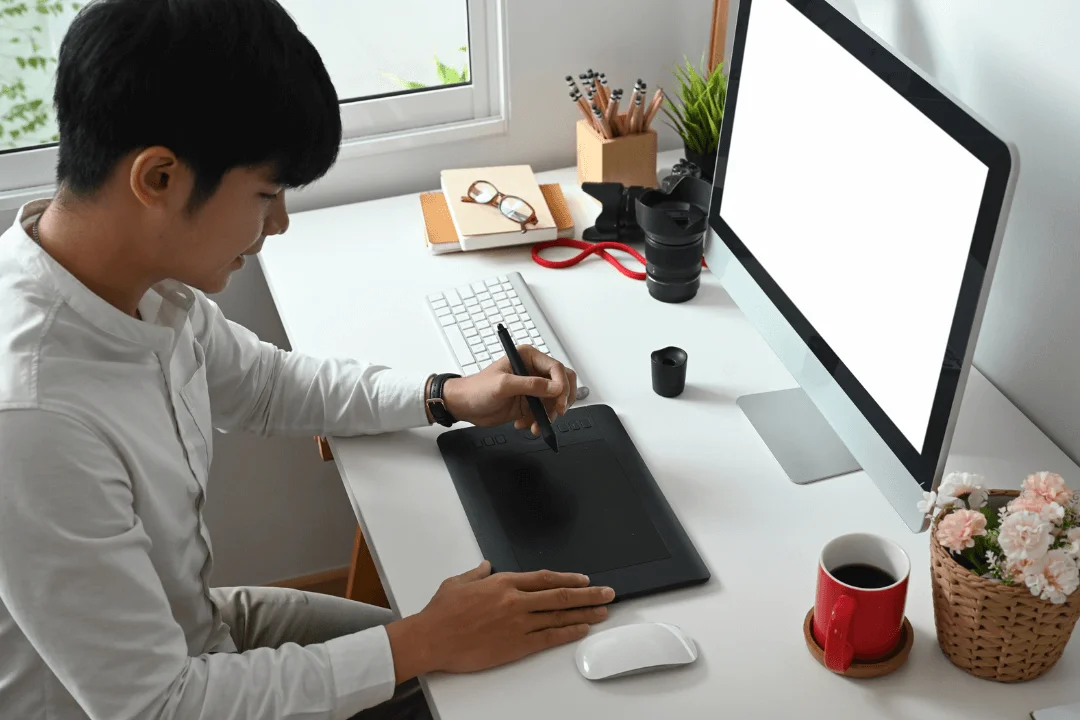




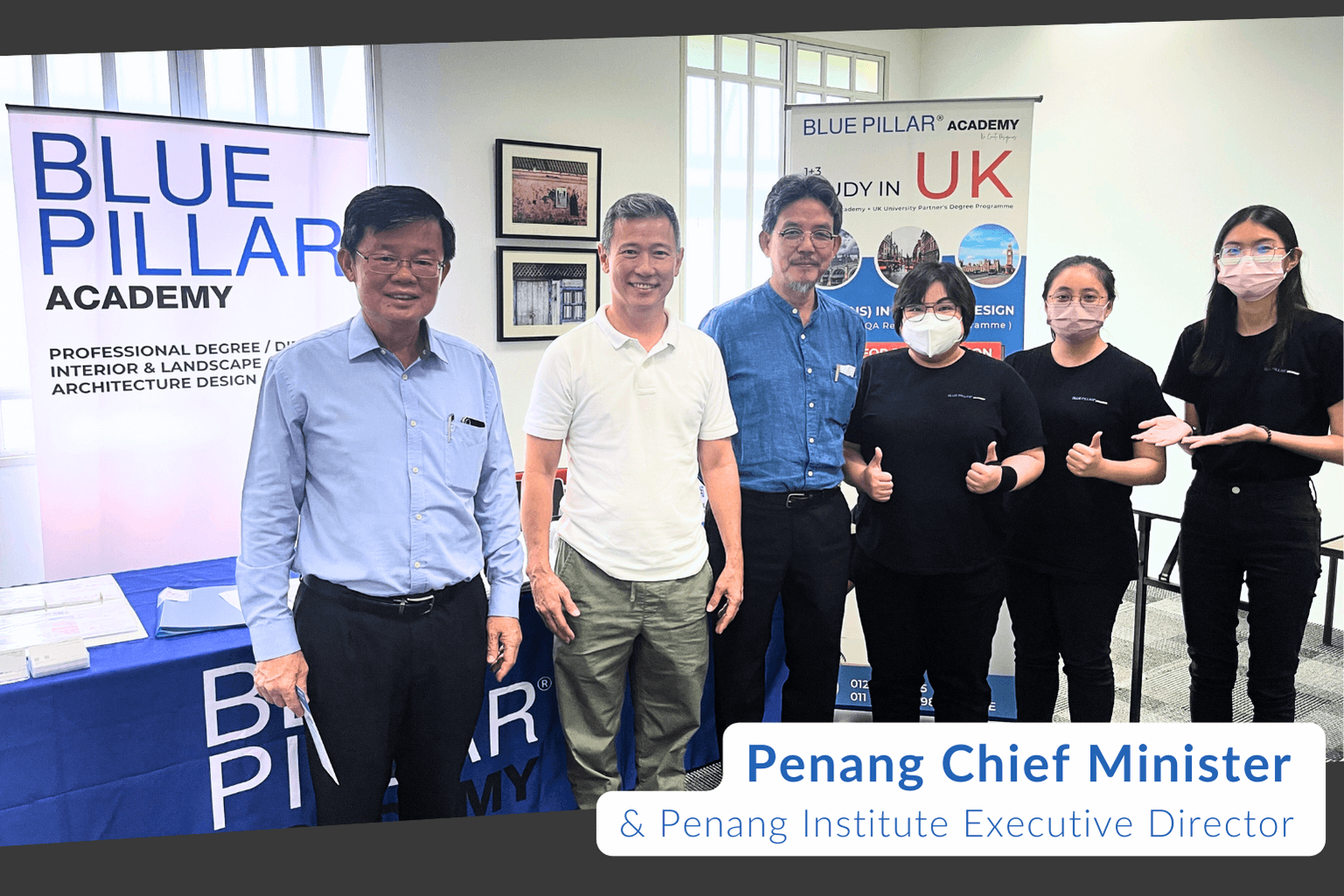
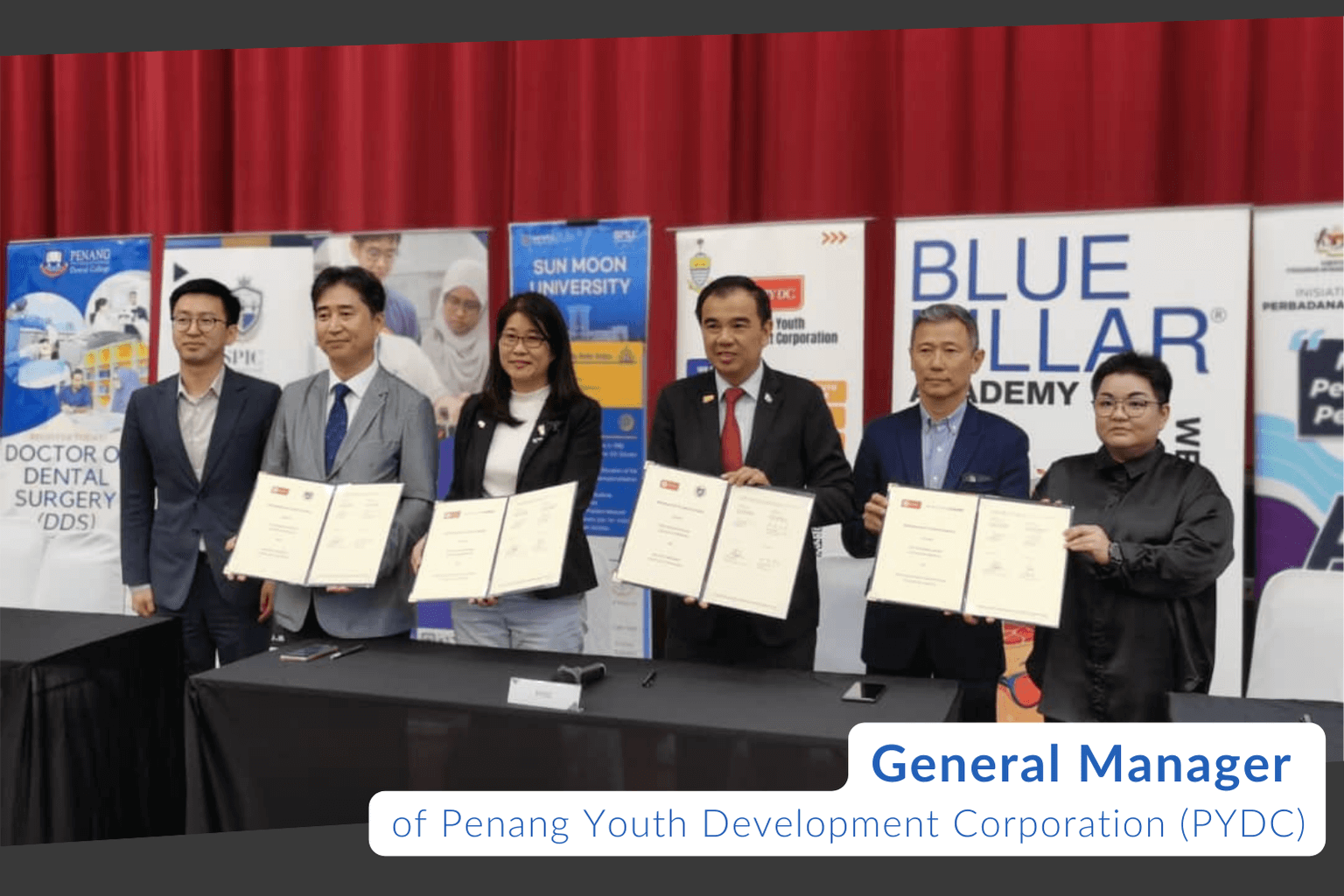

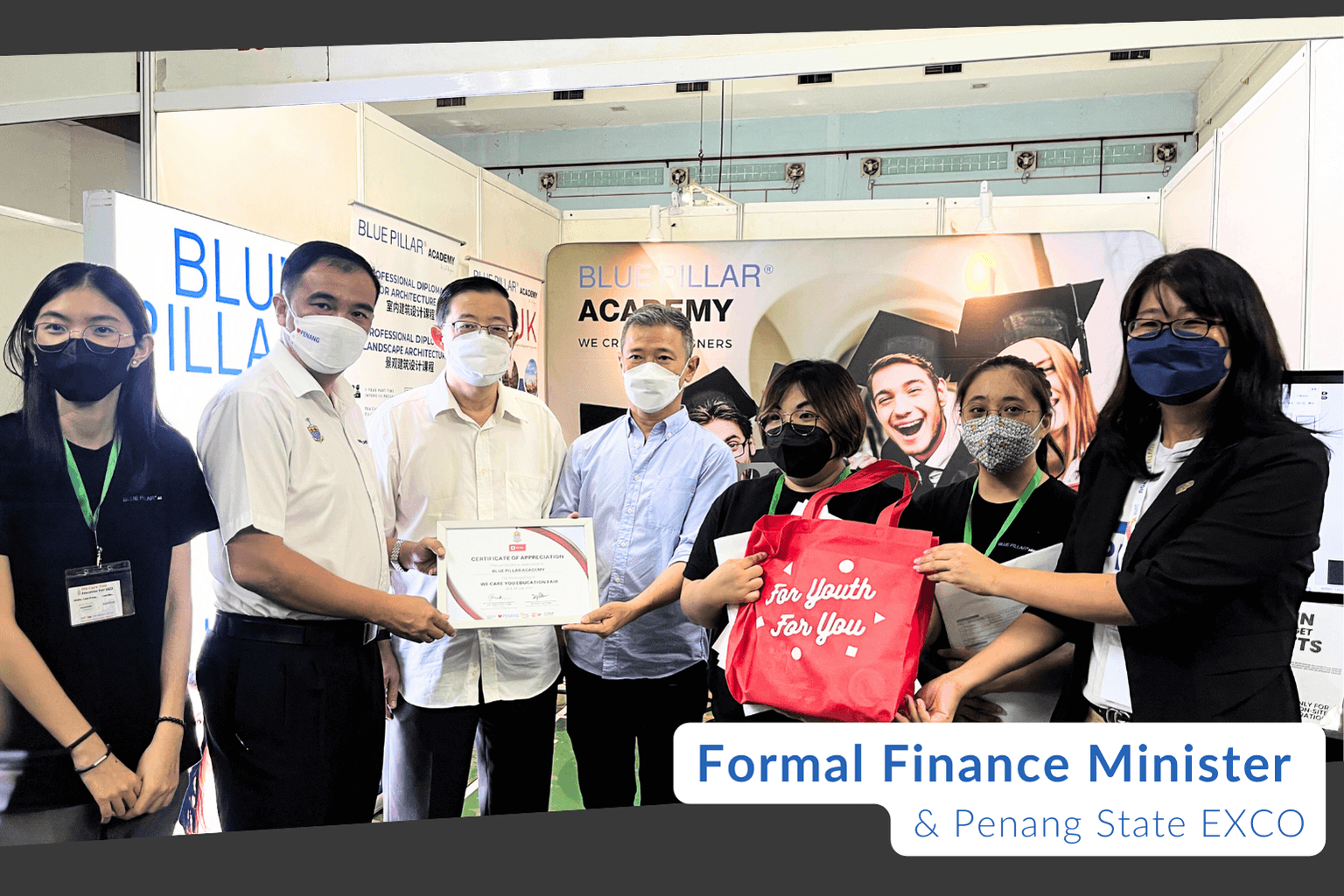


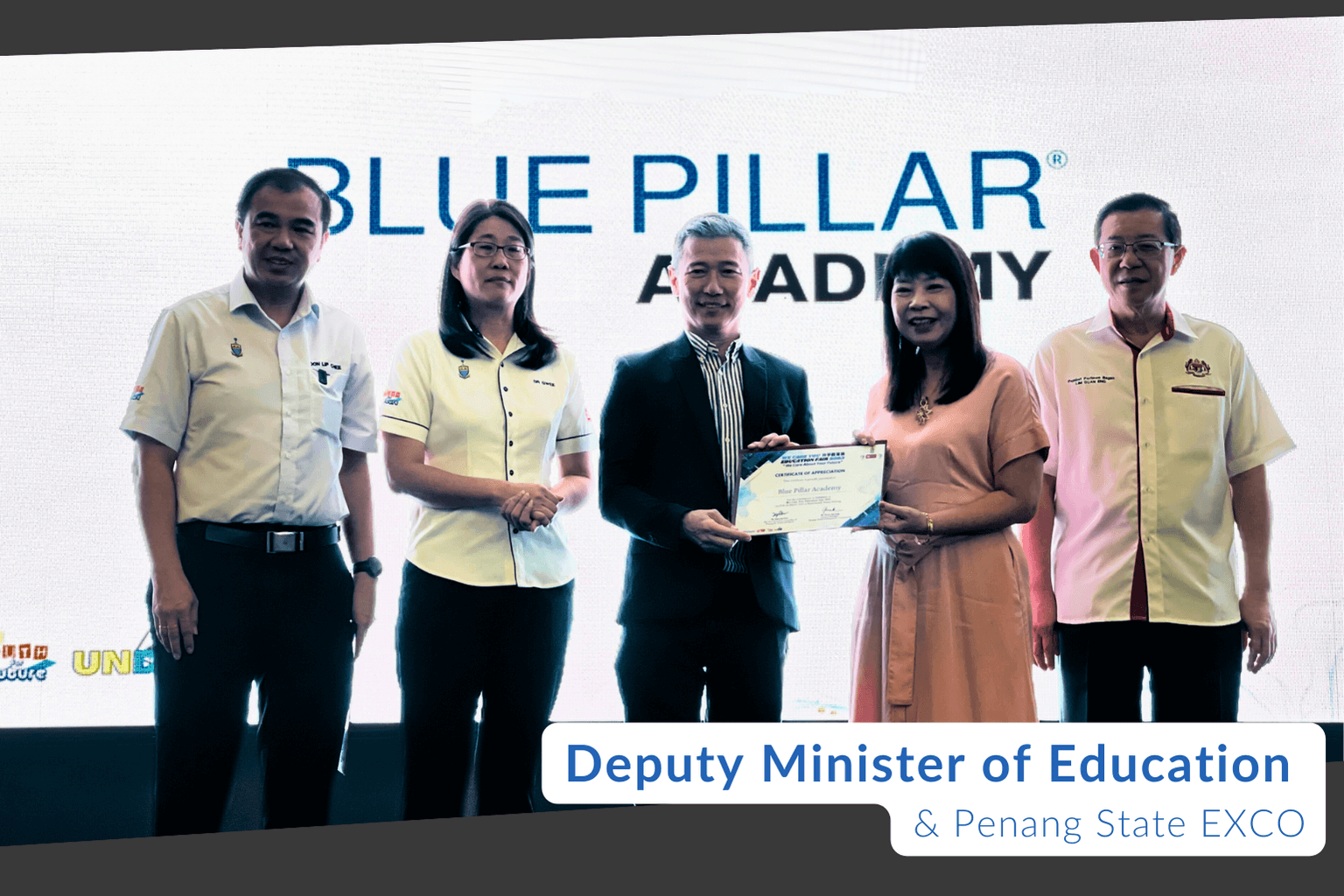
.png)




